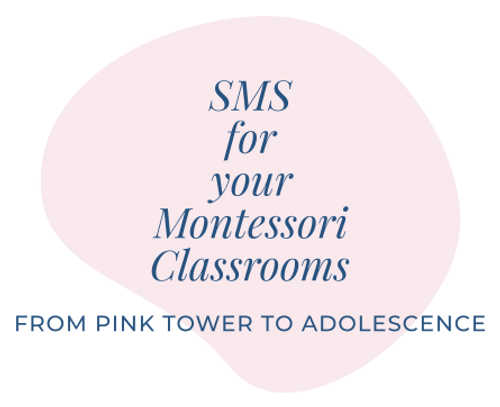Empowering Adolescents to Solve Problems: A Guide for Secondary Montessori Classrooms
- Anne Slamkowski
- Aug 11
- 3 min read

In Montessori secondary classrooms, problem-solving isn’t just a skill—it’s a life tool. Whether the challenge is a tricky math problem, a disagreement with a classmate, or an unexpected issue during a project, adolescents thrive when they are equipped to handle challenges themselves.
Too often, adults rush to “fix” the problem for students. While well-intentioned, this can unintentionally take away the very power adolescents need to develop autonomy, resilience, and confidence.
Dr. Maria Montessori observed that,
“The greatest sign of success for a teacher… is to be able to say, ‘The children are now working as if I did not exist.’” (The Absorbent Mind, 1949)
When we step back, guide with questions, and allow students to work through challenges, we give them the gift of empowerment.
Why Students Should Solve Their Own Problems
Adolescents are in the third plane of development (ages 12–18), a stage marked by identity formation, increased independence, and a deep need to test themselves against the real world. Learning to solve problems supports:
Critical thinking – breaking down complex situations into manageable steps
Emotional regulation – managing frustration and stress when stuck
Social skills – negotiating, compromising, and collaborating
Resilience – building confidence in their ability to overcome challenges
These skills extend far beyond academics. They prepare students for adult life, careers, and community engagement.
The Role of the Teacher: Step Back and Ask Questions
Instead of jumping in with answers, the Montessori guide observes, listens, and prompts with open-ended questions:
“What do you think the first step could be?”
“What do you already know that might help here?”
“What resources could you use?”
“Who might you collaborate with?”
This approach reinforces that students are the drivers of their own learning and problem resolution.
Steps to Teach Problem-Solving
These steps can be modeled at the start of the year and revisited often—applied to math, life, and classroom issues.
1️⃣ Identify the Problem Clearly
Define what is happening and why it’s a problem.
Avoid blame and focus on facts.
Think about possible ways to solve
2️⃣ Break It Into Parts
Separate the issue into smaller, manageable steps.
For math: rewrite the problem in your own words or draw it out if possible.
For life/classroom: name each element of the challenge.
3️⃣ Brainstorm Possible Solutions
List every possible option, even “wild” ones.
Encourage collaboration and creative thinking.
4️⃣ Evaluate Options
Which solutions are realistic?
Which are fair, effective, and respectful?
5️⃣ Choose a Solution and Make a Plan
Decide on the best course of action.
Map out the steps and timeline.
6️⃣ Act on the Plan
Take responsibility for implementation.
Stay flexible if adjustments are needed.
7️⃣ Review the Solution
Does it make sense?
Does anything feel “off” about the outcome?
If yes, what changes might make it more effective?
8️⃣ Embrace Mistakes as Part of the Process
Understand that not all solutions will work the first time.
Reflect on what the mistake taught you and how it can guide future problem-solving.
9️⃣ Reflect and Adjust
What worked well?
What could be improved next time?
How has your problem-solving process grown?
Examples of Application
Math: Tackling a challenging algebra problem by breaking it into steps, trying multiple strategies, and checking to see if the final answer makes logical sense.
Life: Resolving a scheduling conflict between work time and extracurriculars by identifying priorities and negotiating compromises.
Classroom: Addressing noise levels by collaborating as a group to create norms and self-monitoring strategies.
Helping Parents Empower Adolescents at Home
Parents play a crucial role in reinforcing these skills outside of school. Empowerment at home might look like:
Asking guiding questions instead of giving direct solutions.
Encouraging teens to weigh the pros and cons of different options.
Allowing natural consequences (when safe) to teach lessons.
Recognizing effort and problem-solving strategies—not just correct answers.
Creating a family culture where mistakes are learning opportunities.
Give space for reflection after a solution has been found.
When home and school work together, adolescents receive a consistent message: You are capable. You can figure this out. We believe in you.
The Long-Term Gift
When we let adolescents own their problem-solving process, we’re not just teaching them to “get through” the moment. We’re helping them become independent thinkers, self-reliant individuals, and compassionate collaborators.
In Montessori secondary education, this is not an extra—it’s central to developing capable, confident, and community-minded adults.
References:
Montessori, Maria. The Absorbent Mind. 1949.
Montessori, Maria. From Childhood to Adolescence. 1948.
Greene, Ross. Lost at School. Scribner, 2008.




Comments